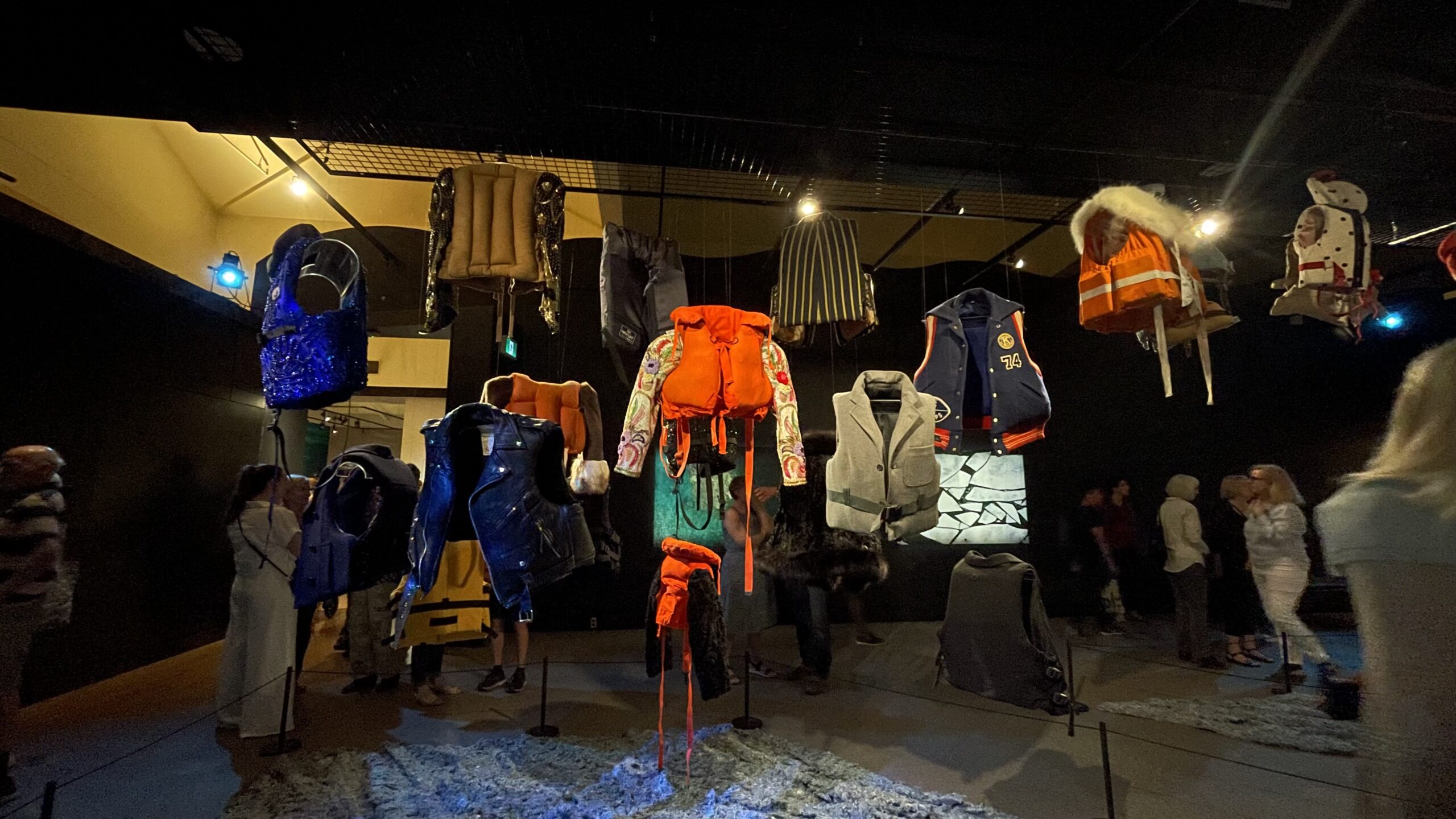Dozens of people showed up on Friday morning for the unveiling of Lifers, the Royal Ontario Museum (ROM) newest art installation.
Lifers is an immersive exhibit that showcases lifers, also known as life jackets, were repurposed by Canadian artist, Noelle Hamlyn. It explores the impact textiles and fashion have on the planet’s water quality.
Hamlyn said the four-year project was inspired by her time on Salt Spring Island, B.C., where she found life jackets washed up on the shore.
“I thought, ‘How did they get here?’” she said. “How long will they last?”
The more she thought about the lifers polluting the ocean, the more her climate anxiety grew, she said.
“I’m just a tiny person in the face of climate change,” Hamlyn said.
She said she took the life jackets she found on the shore and started to repurpose them using old clothing garments.
While working on this project, Hamlyn researched the 1912 sinking of the RMS Titanic.
Some of her lifers were inspired by the clothing of the survivors.
Edith Russell, a survivor of the RMS Titanic, was photographed wearing a black lamb fur coat with diamond buckles.
Using this as inspiration, Hamlyn repurposed a life jacket using a coat that looked similar to Russell’s.
“Everything has a story,” she said. “We can create stories with our clothes.”
Alexandra Palmer, a senior curator at the ROM, said the global textiles industry has a huge negative impact on the planet.
The mission of the Fashion Industry Charter for Climate Action, an initiative taken by the United Nations, is “to drive the fashion industry to net-zero Greenhouse Gas emissions no later than 2050.”
“We can’t recycle our way out of this one,” Palmer said.
While selling and buying clothes second-hand and repurposing older garments is better for the environment than throwing them out, the only way to reduce greenhouse emissions is to reduce the production of fast fashion.
Furthermore, the UN has enacted the 2030 Agenda for Sustainable Development, which lists 17 sustainable development goals (SDGs) to eradicate poverty while trying to heal and protect the planet.
Museums and galleries have taken some of the sustainable development goals, as well.
The International Council of Museums (ICOM) has hosted International Museum Day (IMD) since 1978. Since 2020, IMD focuses on three goals listed in the SDGs. This year, the three goals were Global Health and Wellbeing, Climate Action, and Life on Land.
Robin Etherington, the executive director of the Ontario Museums Association, said exhibitions are being used to create awareness on climate change and sustainability.
Installations like Lifers grant people the opportunity to think about people’s consumption patterns and critically assess the impacts of their actions on the planet, Hamlyn said.
The show runs from June 3 to Feb. 19, 2024.

